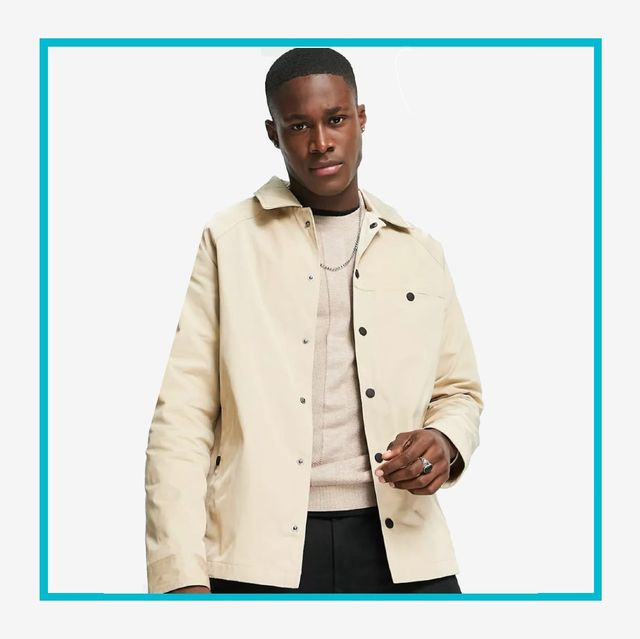The Science Behind Breathability in Branded Clothing Materials
The Science Behind Breathability in Branded Clothing Materials
Blog Article
Understanding Clothing: The Value of Textile Choices in Your Closet
The choice of textile in clothing plays a crucial duty in both visual appeals and functionality. Various materials provide differing degrees of longevity, comfort, and breathability, directly influencing the user's experience. Comprehending these nuances can boost one's closet substantially. Yet, lots of overlook just how these options can influence not simply personal design, however additionally sustainability. What material decisions could redefine your closet and align it with both design and obligation?
The Function of Fabric in Style and Functionality

Usual Textile Kinds and Their Qualities
When choosing apparel, comprehending the characteristics of usual textile kinds is important for making notified selections. Cotton, a widely-used all-natural fiber, is recognized for its breathability, softness, and adaptability, making it suitable for sportswear and day-to-day garments. Bed linen, one more natural choice, flaunts superb moisture-wicking residential or commercial properties and a distinct texture, suitable for warm climates.Wool, usually preferred for its heat and resilience, differs in excellence; merino wool is soft against the skin, while coarser types are utilized for outerwear. Synthetic textiles like polyester and nylon supply longevity and resistance to creases, making them prominent for activewear and travel garments. Blends, which incorporate all-natural and synthetic fibers, can improve functionality while maintaining comfort. By acknowledging these material characteristics, people can choose clothes that straightens with their way of living and visual preferences.
Breathability and Comfort: Picking the Right Fabrics for Different Environments
Choosing the ideal textiles for various environments can substantially enhance convenience and general wearability. Breathable products are necessary in warm climates, as they permit air flow and wetness dissipation. Fabrics such as cotton, bed linen, and moisture-wicking synthetics properly draw sweat far from the body, keeping the wearer cool and dry. Conversely, in chillier environments, thicker materials like woollen or fleece give insulation while keeping breathability, guaranteeing warmth without overheating.Additionally, the selection of fabric weight plays an important function; light-weight fabrics are more suitable for summer, whereas heavier choices are matched for winter wear. Recognizing the distinct residential properties of each textile enables individuals to dress properly for varying climate conditions. Inevitably, selecting comfortable and breathable textiles tailored to details environments can significantly boost everyday comfort and boost the general experience of using clothes.
Toughness and Care: Exactly How Material Impacts Longevity of Your Closet
Choosing the ideal materials can substantially affect the longevity and treatment requirements of a wardrobe. Fabrics such as cotton and polyester are recognized for their durability and convenience of maintenance, making them suitable for daily wear. In comparison, delicate products like silk and lace require even more mindful handling and specialized cleansing approaches, which can enhance the time and initiative needed for care. Branded Clothing.Durability is also affected by the textile's weave and coating; tightly woven fabrics have a tendency to stand up to deterioration much better than loosely woven options. Furthermore, synthetic blends usually offer enhanced toughness, integrating the very best high qualities of multiple fibers.Understanding the treatment instructions for every fabric is vital, as improper drying out or cleaning can bring about early wear. Eventually, picking sturdy products can cause a longer-lasting wardrobe, minimizing the regularity of replacements and adding to an extra sustainable fashion choice
The Influence of Material on Fit and Shape

Sustainable Textile Options: Making Eco-Friendly Decisions
The influence of fabric extends beyond fit and shape to incorporate ecological variables, motivating a growing interest in sustainable fabric options. Green materials, such as organic cotton, hemp, and Tencel, are obtaining traction amongst consumers who prioritize sustainability in their closets. These products are frequently created with fewer chemicals and water, lowering their eco-friendly footprint.Additionally, recycled materials, made from post-consumer waste, use an innovative service to the fabric market's pollution problem. Brands progressively welcome transparency in their sourcing methods, enabling customers to make informed decisions regarding their purchases.Choosing sustainable materials not only sustains moral practices yet likewise motivates the apparel industry to take on even more accountable manufacturing approaches. As awareness of environmental problems increases, people are advised to review the lasting effect of their material options, cultivating a movement towards an extra ecologically aware and sustainable technique to fashion.
Raising Style: Just How Fabric Can Change a Clothing
While numerous may concentrate on shade and cut when picking an attire, the option of material plays a necessary role in raising check over here style and improving general appearance. Various materials share unique state of minds and messages; as an example, silk emanates deluxe and elegance, while jeans supplies a laid-back, kicked back vibe. The structure and drape of a fabric can drastically alter the silhouette, with structured materials providing a refined appearance and softer ones developing a more fluid, unwinded aesthetic.Moreover, the weight of the material affects wearability throughout periods. Light-weight fabrics like bed linen and cotton are perfect for summertime, while heavier materials such as wool and velour supply heat and sophistication in cooler months. Recognizing textile residential or commercial properties, such as breathability and stretch, also empowers people to make enlightened choices that enhance comfort without jeopardizing design. Inevitably, the appropriate fabric can transform an outfit from average to extraordinary, making it a vital consideration in any kind of closet.
Regularly Asked Inquiries
Exactly how Do I Determine the Textile Content of My Clothes?
To determine textile content, one can check out treatment tags, conduct burn tests for fiber identification, or speak with fabric examples. These approaches assist set apart products, making sure notified choices for clothing treatment and upkeep in everyday wear.
Can Fabric Option Affect My Mood or Self-confidence?
Fabric option can considerably impact a person's mood and self-confidence. Branded Clothing. Specific materials may stimulate feelings of convenience or sophistication, while others can feel uncomplimentary or restrictive, ultimately affecting self-perception and psychological wellness throughout the day
What Fabrics Are Best for Delicate Skin?
For individuals with sensitive skin, all-natural textiles like bed linen, cotton, and bamboo are usually suggested. These products are breathable, hypoallergenic, and less most likely to cause irritability, making them check my blog suitable choices for convenience and skin health.
How Do I Properly Clean and Care for Different Fabrics?
To effectively wash and care for different materials, one need to consider each product's particular demands, consisting of temperature setups, detergents, and drying techniques, making sure longevity and preserving the textile's original qualities for optimal usage.
Exist Specific Fabrics for Athletic or Performance Use?
Sports or efficiency wear usually makes use of materials such as polyester, nylon, and spandex. These materials are developed for moisture-wicking, breathability, and adaptability, boosting activity and comfort throughout exercises while offering sturdiness and support. Alternatively, in colder climates, thicker materials like woollen or fleece provide insulation while maintaining breathability, making sure heat without overheating.Additionally, the option of textile weight plays an important role; lightweight materials are more effective for summertime, whereas heavier choices are matched for winter months wear. In contrast, fragile materials like silk and shoelace require even more cautious handling and specialized cleansing methods, which can increase the time and initiative required for care.Durability is also affected by the material's weave and surface; securely woven fabrics often tend to resist wear and tear far better than freely woven options. In comparison, inflexible fabrics can limit movement however give a timeless, refined look.Moreover, the thickness and texture of the material can affect the visual assumption of body shape. The impact of textile expands beyond fit and shape to incorporate environmental elements, triggering an expanding interest in lasting textile selections. The texture and drape of a textile can significantly alter the silhouette, with organized materials giving a sleek appearance and softer ones creating an extra fluid, relaxed aesthetic.Moreover, the weight of the fabric influences wearability across periods.
Report this page